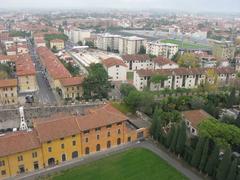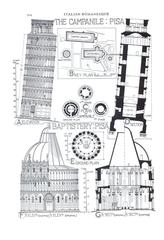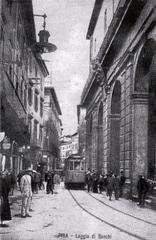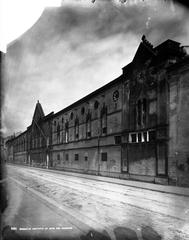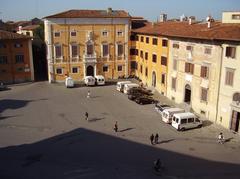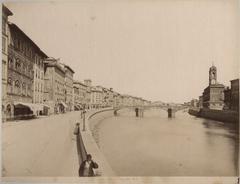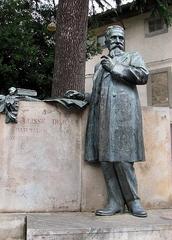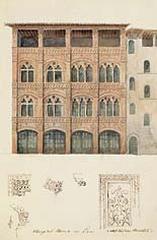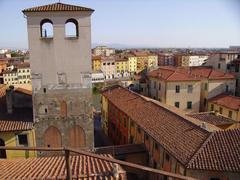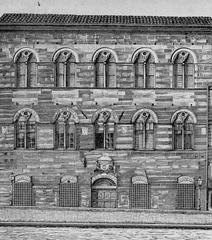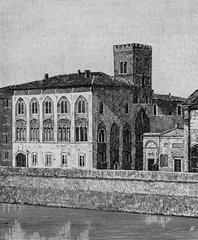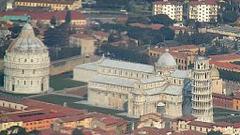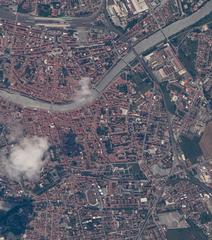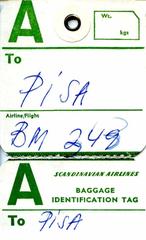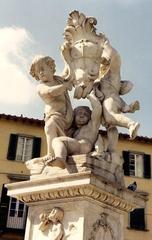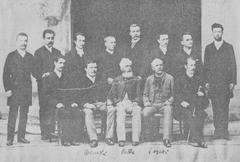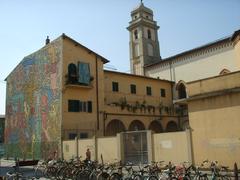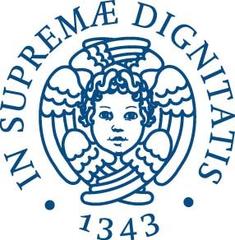Villa Medicea di Coltano: Visiting Hours, Tickets, and Guide to Pisa’s Historic Medici Villa
Date: 04/07/2025
Introduction
Nestled between Pisa and Livorno, Villa Medicea di Coltano is a captivating emblem of Tuscany’s rich heritage. This remarkable estate blends Renaissance artistry, aristocratic legacy, scientific innovation, and vibrant cultural life. Established on medieval foundations and expanded in the 16th century under the Medici family, the villa has evolved from a grand ducal hunting lodge and agricultural hub to a centerpiece in the history of wireless communication—playing host to Guglielmo Marconi’s pioneering radio station. Today, the villa offers immersive experiences through its festivals, guided tours, and idyllic natural surroundings.
Whether you are searching for details on visiting hours, ticketing, architectural highlights, or nearby attractions, this comprehensive guide will equip you with all you need to plan your visit. The villa’s proximity to renowned landmarks such as the Leaning Tower of Pisa and the Parco di Migliarino San Rossore Massaciuccoli makes it a perfect addition to your Tuscan itinerary. Signature events—including the annual 110 Hertz Festival and Marconi Music Nights—bring history to life, celebrating Coltano’s scientific legacy through music and community gatherings. Villa Medicea di Coltano is a must-visit for history buffs, culture seekers, and families alike (Proloco Coltano, Parco San Rossore, Pisa Guidatoscana, Terre di Pisa).
Historical Overview
Medieval and Renaissance Foundations
The region of Coltano has roots stretching back to at least the 8th century, with early documentation referencing hunting rights granted to local nobility by the Abbey of San Savino (Proloco Coltano). By the 11th century, a primary residence existed in the area known as Palazzi, with remnants of this structure still visible within today’s villa complex.
The 16th century marked Coltano’s transformation under the Medici family. In 1562, a papal bull transferred the estate to the Order of the Knights of Santo Stefano, founded by Cosimo I de’ Medici (Proloco Coltano). Cosimo I’s reclamation works laid the foundation for the villa’s development. Renowned architect Bernardo Buontalenti was commissioned to design the villa, which now stands as an exemplar of Renaissance harmony and Medici innovation (Il Cane dei Poretti). The villa’s Italianate gardens, elegant frescoes, and functional spaces attracted notable visitors such as Michel de Montaigne in 1581.
Baroque Enhancements and Grand Ducal Patronage
In the 17th century, Cosimo III de’ Medici initiated further enhancements, including new frescoes, gardens, and ornamental fountains (Il Cane dei Poretti). Artists like Francesco Furini and Santi di Tito enriched the villa’s interiors, while the establishment of a stud farm by Grand Duke Pietro Leopoldo expanded its agricultural and leisure functions.
From the Savoy Dynasty to the Modern Era
With the fall of the Medici line, the estate passed to the House of Lorraine and later the House of Savoy. King Vittorio Emanuele II’s residency further elevated Coltano’s prestige (Proloco Coltano). In the early 20th century, the Opera Nazionale Combattenti led extensive agricultural development, consolidating Coltano’s role in Tuscan rural life.
Marconi and the Birth of Modern Communications
Coltano’s legacy grew in the early 20th century as Guglielmo Marconi selected it for Italy’s first long-wave radio station. In 1911, Marconi conducted the first transoceanic radio transmission from Coltano, linking Italy to Africa and Canada (Pisa Guidatoscana). The Centro Radio Coltano, with its imposing antennas, became a symbol of technological advancement and played a pivotal role in Italy’s global communications (Wikipedia).
Wartime and Postwar Transformations
During WWII, the radio station was destroyed by retreating German forces. Subsequently, the area served as an Allied prisoner-of-war camp, housing notable detainees such as the poet Ezra Pound and several Italian cultural figures (Pisa Guidatoscana). Postwar, the villa oversaw successful reclamation and agricultural initiatives, reinforcing its status as a rural and historical hub.
Visiting Villa Medicea di Coltano: Practical Guide
Opening Hours and Tickets
- Opening Hours: Tuesday to Sunday, 9:00 AM – 6:00 PM (closed Mondays and holidays). Hours may vary for special events; always check the official website before your visit.
- Ticket Prices: Standard admission €8; reduced €5 for EU citizens aged 18-25; free for children under 18 and Pisa residents. Guided tours available for an additional fee.
- Guided Tours: Held daily at 10:00 AM, 2:00 PM, and 4:00 PM (reservation required). Tours provide insights into the villa’s art, history, and gardens.
Accessibility and Amenities
- Accessibility: Wheelchair accessible with ramps and adapted restrooms; assistance available on request.
- Facilities: Restrooms, parking, and temporary amenities during major events.
- Getting There: By car, Villa Medicea di Coltano is a 20-minute drive from Pisa; parking is available. Public transport options (bus line 7) are limited.
Visitor Tips
- What to Bring: Comfortable walking shoes and water, especially if exploring the gardens and nearby park.
- When to Visit: Spring and autumn offer pleasant weather and fewer crowds. Check event calendars for festivals and workshops.
Architectural and Artistic Highlights
Layout and Design
The villa features a central block with symmetrical wings, balanced windows, and a modest pediment. Four corner towers reflect Medici defensive architecture. The use of local stone, stucco, and terracotta tiles root the building in Tuscan tradition, while the formal gardens and tree-lined avenues create a harmonious landscape (Parco San Rossore).
Interior Features
While not all rooms are open to the public, highlights include:
- Grand halls with frescoed or coffered ceilings
- Decorative stucco and trompe-l’oeil effects
- Period furnishings and tapestries
- Artistic works by local and Medici court artists
Ancillary Structures
The estate includes barns, stables, and granaries, all constructed to maintain architectural harmony. The historic canals and irrigation systems are enduring symbols of Medici agricultural innovation.
Cultural Events and Community Life
110 Hertz Festival
This annual event, held in June, honors Marconi’s radio legacy with live music, theater, workshops, and community gatherings (110 Hertz Festival, Terre di Pisa). Tickets and reservations are recommended.
Marconi Music Nights
Throughout July and August, the villa hosts a series of concerts spanning classical, contemporary, and world music (Pentagramma Pisa). Events include light dinners and social activities—reservations are advised.
Festival Discanto
This October music festival celebrates Italian singer-songwriters and original music, featuring competitions and workshops.
Educational Programs
Workshops and masterclasses in history, music, and nature are offered in collaboration with local schools and cultural associations.
Nearby Attractions and Photography
- Parco di Migliarino, San Rossore, Massaciuccoli: Explore hiking trails, wildlife, and lakes adjacent to the villa.
- Pisa’s Historic Sites: The Leaning Tower, Piazza dei Miracoli, and Museo Nazionale di San Matteo are a short drive away.
- Marconi Radio Station Remains: Interpretive signage and photo opportunities are available near the historic radio site.
- Photography: The villa’s white façade, towers, and gardens are best photographed in soft morning or evening light.
Frequently Asked Questions (FAQ)
Q: What are the visiting hours?
A: Typically Tuesday–Sunday, 9:00 AM–6:00 PM. Confirm on the official website before your visit.
Q: How do I book tickets or tours?
A: Tickets are available online and at the entrance; guided tours require advance reservation.
Q: Is the villa accessible for people with disabilities?
A: Yes, most areas are accessible. Contact staff for specific needs.
Q: Are pets allowed?
A: Pets are allowed in park areas on a leash but not inside the villa.
Q: Can I take photographs inside?
A: Photography is allowed without flash; tripods require prior authorization.
Q: Is the villa suitable for children?
A: Yes, with educational programs and outdoor spaces.
Q: Are special events held at the villa?
A: Yes, including the 110 Hertz Festival, Marconi Music Nights, and workshops.
Plan Your Visit and Stay Connected
Villa Medicea di Coltano offers a rich tapestry of Tuscan history, Renaissance architecture, and engaging cultural events. Whether you are inspired by Medici art, scientific innovation, or local community life, the villa promises a rewarding experience.
Enhance your visit: Download the Audiala app for personalized audio tours, event updates, and interactive maps. Follow Villa Medicea di Coltano on social media for the latest news and visitor stories.
References
- Villa Medicea di Coltano: A Historical Gem and Must-Visit Pisa Historical Site (Proloco Coltano)
- Villa di Coltano: Visiting Hours, Tickets, and Architectural Highlights Near Pisa (Parco San Rossore)
- Discover Villa Medicea di Coltano: History, Visiting Hours, Tickets & Nearby Attractions (Museionline, Pisa Guidatoscana, Terre di Pisa, Wikipedia)
- Villa Medicea di Coltano Cultural Events and Visitor Information in Pisa (Terre di Pisa, Pentagramma Pisa, WhichMuseum)
